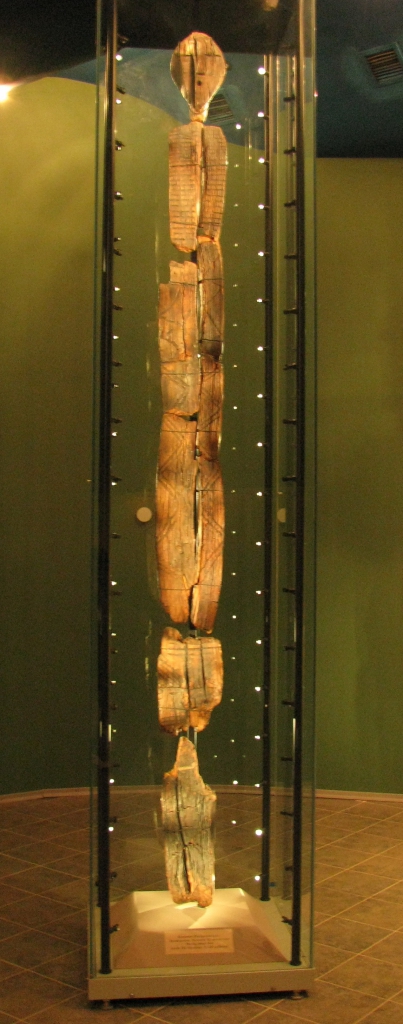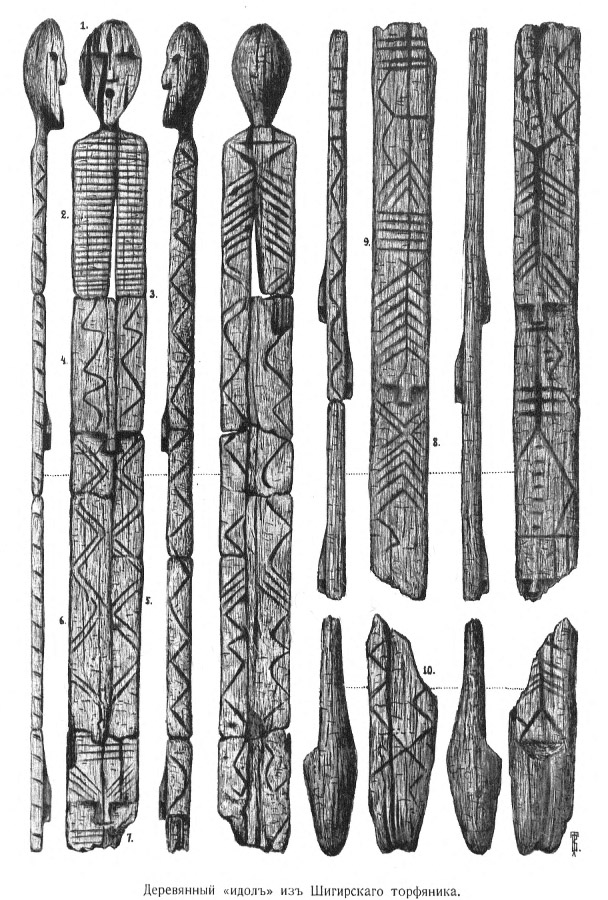The Shigir Sculpture (or Shigir Idol) is the oldest known wooden sculpture in existence, being approximately 11,500 years old. It was discovered in 1894 in a peat bog in Shigir, in the Middle Urals.
There are a number of hypotheses about what the figure represents and what the carvings across it mean.
In 2014, during use-wear analysis of the figure, yet another new face was discovered by Svetlana Savchenko and Mikhail Zhilin in the upper part of the back. In conclusion, eight figural depictions can now be identified, including the faces from the lost fragment attested by Tolmachev’s drawing: the topmost figure with a round carved head, three flat faces on the front plus four flat faces on the back of the body. All of the faces appear distinctly individual.
The decorative elements of the Shigir figure may reflect encoded mythologies. The vertical placement of the faces could indicate the presence of an internal hierarchy among the images, or a sequence of events. Available ethnographic data provide only limited help in deciphering these carvings. Above all, however, the Shigir sculpture is unique within the early art of Eurasia and offers the potential for a better understanding of the spiritual world of early hunter-gatherer-fishers of the forest zone of Eurasia.

